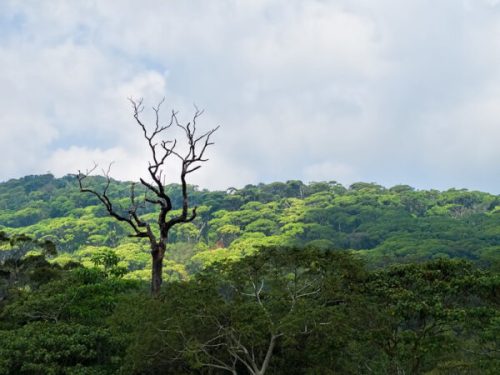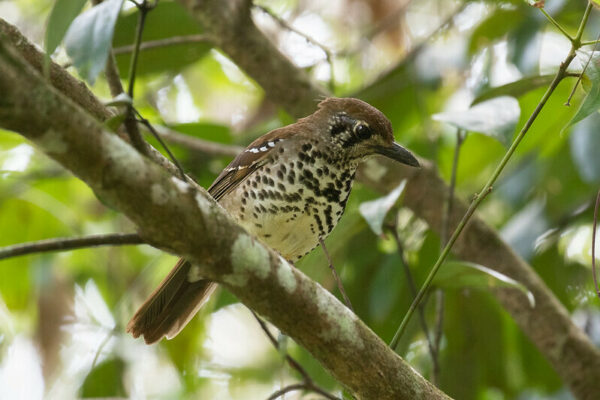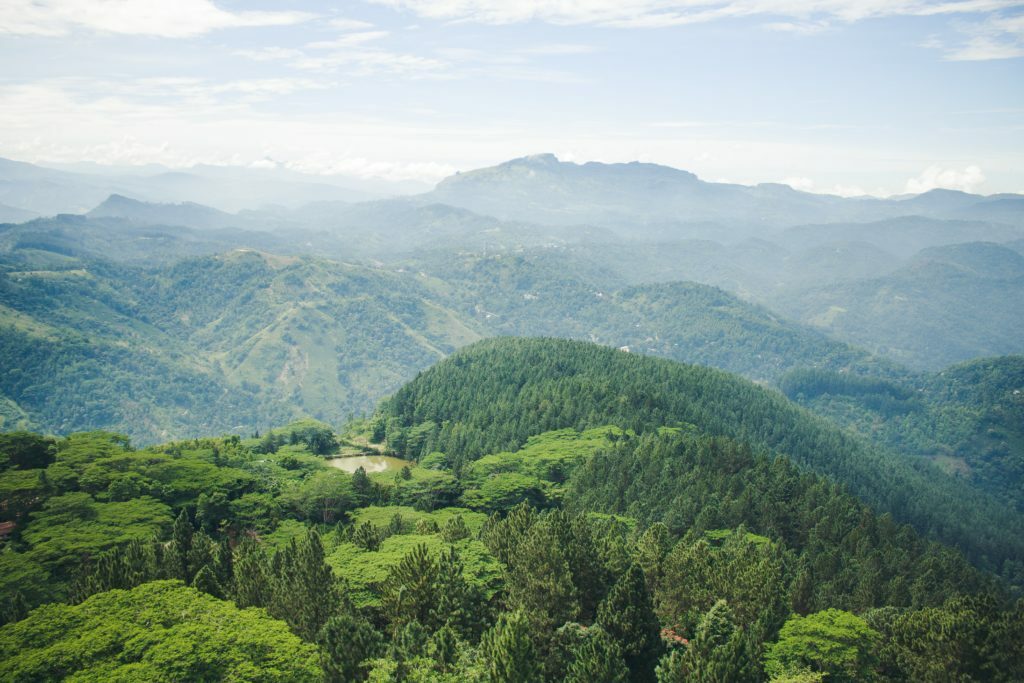The Sinharaja Forest Reserve is the last remaining primary tropical ecosystem in the nation. which spans 11,000 Ha of primary and secondary forests and is situated in the south-west lowland wet zone of Sri Lanka’s Sabaragamu and Southern provinces. This Tropical Rain Forest serves as a habitat for rare and endangered species and is a premier location for research on the process of biological evolution.
The Sinharaja Forest Reserve, the only substantial natural tropical rainforest tract on the island was initially recognized in 1936. It was declared as a biosphere reserve by UNESCO in 1978, And in 1988, UNESCO designated Sinharaja Forest as a UNESCO World Heritage Site under the title Sinharaja Forest Reserve in recognition of the need for the highest level of conservation.
Faunal Diversity in Sinharaja Rain Forest
Preliminary research on Sinharaja’s fauna has found a significant degree of endemism among butterflies, fish, amphibians, reptiles, birds, and mammals. In fact, 95% of Sri Lanka’s indigenous birds have been reported in Sinharaja. Endemism in mammals and butterflies is also more than 50%. Among the larger mammals.
Leopards are one of the largest creatures known in the Sinharaja rain forest. Leopards are rarely seen, but their presence has been established by tracks and other indicators. The Golden Palm Civet and the Badger Mongoose have been spotted on occasion. The Purple faced Leal Monkey is the most usually seen monkey.
The Western portion of the reserve had 72% resident non-endemic birds and 13% migrants. The presence of mixed species foraging bird groups, a phenomena common in rain forests, is one of the most exciting and colorful sights to be found in the Sinharaja.
The agamids are the most frequent category of reptiles, with the Green Garden Lizard being the most common. The sightings of Calotes liolipis, an arboreal species and the rarest of all agamids found on the island, are especially significant. Green Pit Viper and Hump-nosed Viper are two snakes found in this forest that are native to Sri Lanka.


Floral Diversity in Sinharaja Rain Forest
The average height of the trees ranges between 35m and 40m, with some trees reaching up to 50m. Sinharaja has 13 of the 25 indigenous Sri Lankan genera. The total plant density, including trees, shrubs, and seedlings, is estimated to be around 240,000 individuals per hectare, with 95% of those in the surface layers being less than 1m tall.
The density of trees, lianas with girths greater than 30cm at breast height, ranges between 600 and 700 individuals/ha. While the number of merchanatable individuals of trees with girths more than 150cm ranges between 45 and 55 per hectare.

Bird Watching Tour in Sinharaja
Birdwatchers can spot about 21 of the 33 indigenous bird species during a trip to Sinharaja, while the actual number of endemic birds documented at Sinharaja is higher. Stay a night in Sinharaja to view the generally overlooked nocturnal fauna, and you might catch a glimpse of the Serendib Scops Owl, the newest and one of the rarest bird species to be discovered in Sri Lanka.
- Srilanka Blue Magpie
- Srilanka Drongo
- Red faced Malkoha
- Srilanka White Eye
- Yellow Fronted Barbet
- Orange Billed Bubbler
- Malabar Trogan
- Ashy Headed Laughing Thrush
- Spotted Winged Thrush
- Srilanka Hanging Parrot
- Srilanka Hill Myna
- Black- throated Munia
- Sri Lanka Junglefow

Sri Lanka Junglefow

Srilanka Blue Magpie

Srilanka Hanging Parrot

Spotted Winged Thrush
Weather in Sinharaja
Sinharaja’s average yearly temperature is around 23.6°C. It receives more than 2500mm of rainfall per year and is located within 3810-5080mm isohyets. Rainfall is evenly distributed, with high season occurring during the two monsoons, May-July and October-December.
How to get to Sinharaja Rain Forest
- Colombo to Sinharaja via Pelawatta -138 km
- Galle to Sinharaja via Akmeemana -79 km
- Mirissa to Sinharaja via Akuressa -91 km
- Yala to Sinharaja via Middeniya -154 km
- Bentota to Sinharaja via Pelawatta -85 km
- Haputale to Sinharaja via Udawalawe -193 km
Sinharaja Forest Reserve Entrances
- Kudawa Entrance
- Morning Side Entrance
- Pitadeniya Entrance
- Lankagama Entrance
- Samangala Entrance
Opening Hours and Trek Duration of Sinharaja Rain Forest
Sinharaja Opening and Closing Times are 6.30 a.m to 6.00 p.m and the Trek Duration is From 3 hours to 7 hours.
Tips to Sinharaja Forest Reserve
- It’s mandatory to take an onsite naturalist with you.
- Wear leech socks and insect repellent.
- Take enough bottled water. Don’t forget to stay hydrated.
- Never get out of the footpath unless permitted by your naturalist.
- Do not feed the animals inside the park.
- Maintaining silence in the rainforest is one way to enjoy yourself.
Best Time to Visit
The best time to visit Sinharaja Forest Reserve is between January and May, or August and December. During the Monsoon, you should avoid entering any forest or nature reserve. During the Monsoon Season, Insects, bugs, and mosquitoes are at their peak, and diseases abound. Furthermore, the area receives a lot of rain, making sightseeing and exploration difficult.
What to Wear
Wearing long pants over a decent pair of socks is strongly advised. Also, remember to bring comfortable walking shoes. Quality footwear is essential! You’ll be wandering through the jungle for 4-5 hours, so wear the most comfy shoes you can find. Avoid wearing open shoes because leeches can bite your foot. The rainforest also contains stones, pebbles, and dirt that can hurt your feet.
Where To Stay
There are a few places for visitors to stay near the Sinharaja Rainforest. Consider staying in Colombo or another city for a half-day visit to Sinharaja. However, if you want to stay close to nature, there are a few of lodges nearby. We can provide some suggestions! You can make your selection based on your budget and personal preferences.
- Rainforest Eco Lodge
- Rainforest Mount Lodge
- Blue Magpie Lodge
- Sinharaja River Edge Camp
Image courtesy of Francesco Veronesi Dan Lundberg Dinesh Heymaal via creative commons licenses. some rights reserved.
Ceylon Hunt has tour packages which facilitate Sinharaja Trek tours in Sri Lanka and you can check them going through our Nature Trail – Sri Lanka tour package or make the resevations through our website.

